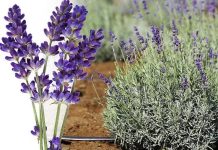Lavender – A Timeless Remedy for Headaches and Fatigue

Lavender, with its distinctive fragrance and calming properties, has been valued since ancient times as a universal medicinal plant. Across various cultures and historical periods, this aromatic herb has been treasured not only for its beautiful purple blossoms and pleasing scent but also for its therapeutic benefits. From ancient Egypt to the Roman Empire and even traditional Georgian remedies, lavender has played an important role in natural healing practices.
One of the most well-known qualities of lavender is its ability to act as a natural antidepressant. The calming and soothing properties of this herb are believed to ease anxiety, promote emotional balance, and help the body relax. Because of these effects, lavender is especially effective when dealing with symptoms such as stress-induced headaches and fatigue.
But how exactly can you use lavender to ease headaches and restore energy? While many essential oils and herbal products are available today, one of the simplest and most pleasant ways to benefit from lavender is to consume it as a refreshing beverage. One such option is lavender lemonade – a delicious, natural drink that not only refreshes your body but also soothes your mind.
Lavender Lemonade Recipe
This lavender-infused lemonade is both healing and flavorful. Whether you’ve had a long day at work, suffered through a tension headache, or simply need a moment of peace, this drink offers a wonderful balance of citrus brightness and herbal calm.
Ingredients:
1.5 liters of water
100 milliliters of honey (you can adjust the sweetness to taste)
Juice of 5 fresh lemons
1 drop of lavender essential oil or 3 tablespoons of dried lavender flowers
Preparation Method:
Option 1: Using Lavender Essential Oil
If you have lavender essential oil on hand, this version is quick and easy.
In a large pitcher, combine 1.5 liters of cool water with the juice of 5 lemons.
Add one drop of high-quality lavender essential oil (make sure it is food-grade and safe for internal use).
Stir in the honey until it fully dissolves. You may adjust the amount of honey or water to suit your personal taste.
Place the mixture in the refrigerator for a few hours to chill. You can also add ice before serving.
This version is especially convenient and retains the essential aromatic compounds found in lavender. Just be careful not to exceed one drop of the essential oil, as it is highly concentrated.
Option 2: Using Dried Lavender Flowers
For a more traditional and gentle infusion, dried lavender flowers are a perfect choice.
Add 3 tablespoons of dried lavender blossoms to a pot with 1.5 liters of water.
Bring the water to a boil, then lower the heat and let the flowers simmer gently for a few minutes.
After simmering, cover the pot and let the mixture steep for about 1 hour. This allows the water to absorb the full flavor and benefits of the lavender.
After an hour, strain the liquid into a pitcher to remove the flower remnants.
Add the juice of 5 lemons and stir in 100 milliliters of honey.
Place the pitcher in the refrigerator and let the lemonade chill for at least 30 minutes before serving.
This method offers a more nuanced floral flavor and is ideal for those who prefer to use the plant in its natural form.
Serving Suggestions:
Lavender lemonade is best enjoyed cold. For an extra refreshing experience, serve it over ice. You can garnish the glass with a slice of lemon or a sprig of fresh lavender for visual appeal and added aroma.
This drink can be a perfect companion on a warm summer afternoon, during a wellness retreat, or even as a healthy option at a dinner party. It not only hydrates the body but also supports relaxation and mental clarity.
Other Lavender Uses for Headaches and Fatigue
Lavender’s benefits extend beyond beverages. For more intense or persistent headaches, especially tension or stress-related ones, there are additional ways to use lavender:
Lavender Oil Bath: Add a few drops of lavender essential oil to warm bathwater. Soak in the bath for 15–20 minutes to relax tense muscles and calm your nervous system. The steam helps the essential oil enter your respiratory system, offering a deeply calming effect.
Lavender Massage: Mix a drop or two of lavender essential oil with a carrier oil (like almond or coconut oil), and use it to massage your temples, neck, or shoulders. This can ease muscle tension and promote circulation, helping to reduce headache intensity.
Aromatherapy: Diffusing lavender oil in your home or workspace can help maintain a peaceful atmosphere. The gentle aroma soothes the senses and may reduce the frequency of stress-related headaches.
Compress: Soak a cloth in cool water mixed with a few drops of lavender oil, and place it on your forehead or the back of your neck to relieve headache pain.
A Natural Path to Calmness
Incorporating lavender into your daily routine doesn’t require dramatic lifestyle changes. Small steps—like sipping a lavender lemonade or diffusing essential oil in the evening—can make a noticeable difference in how you feel physically and emotionally. Whether you suffer from frequent headaches, burnout, or just need a gentle moment of peace in your day, lavender provides a natural, accessible way to reconnect with balance and well-being.
So, the next time you feel the first signs of a headache or notice you’re running low on energy, try reaching for a natural solution. With lavender lemonade, you’re not only enjoying a delightful drink—you’re giving your body and mind the gentle care they deserve.












